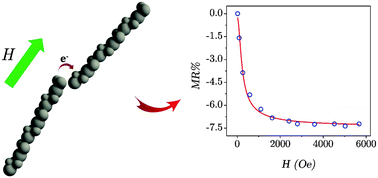Anisotropic magnetoresistivity in structured elastomer composites: modelling and experiments
Abstract
A constitutive model for the anisotropic magnetoresistivity in structured elastomer composites (SECs) is proposed. The SECs considered here are oriented pseudo-chains of conductive-magnetic inorganic materials inside an elastomer organic matrix. The pseudo-chains are formed by fillers which are simultaneously conductive and magnetic dispersed in the polymer before curing or solvent evaporation. The SEC is then prepared in the presence of a uniform magnetic field, referred to as Hcuring. This procedure generates the pseudo-chains, which are preferentially aligned in the direction of Hcuring. Electrical conduction is present in that direction only. The constitutive model for the magnetoresistance considers the magnetic pressure, Pmag, induced on the pseudo-chains by an external magnetic field, H, applied in the direction of the pseudo-chains. The relative changes in conductivity as a function of H are calculated by evaluating the relative increase of the electron tunnelling probability with Pmag, a magneto-elastic coupling which produces an increase of conductivity with magnetization. The model is used to adjust experimental results of magnetoresistance in a specific SEC where the polymer is polydimethylsiloxane, PDMS, and fillers are microparticles of magnetite–silver (referred to as Fe3O4[Ag]). Simulations of the expected response for other materials in both superparamagnetic and blocked magnetic states are presented, showing the influence of the Young's modulus of the matrix and filler's saturation magnetization.


 Please wait while we load your content...
Please wait while we load your content...